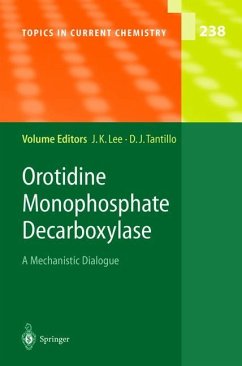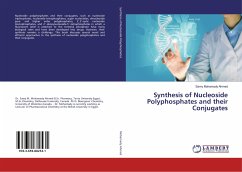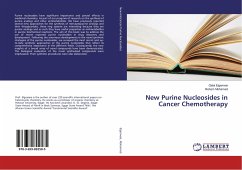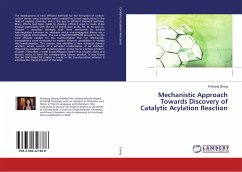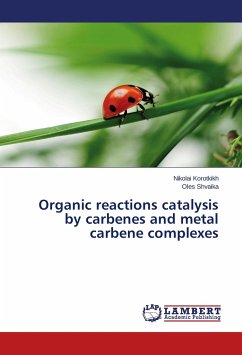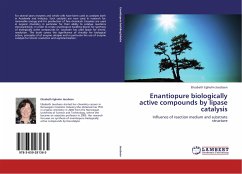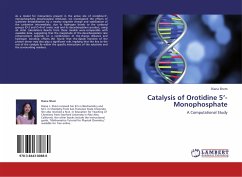
Catalysis of Orotidine 5'-Monophosphate
A Computational Study
Versandkostenfrei!
Versandfertig in 6-10 Tagen
32,99 €
inkl. MwSt.

PAYBACK Punkte
16 °P sammeln!
As a model for interactions present in the active site of orotidine-5 -monophosphate decarboxylase (ODCase), we investigated the effects of substrate destabilization by a nearby negative charge and stabilization of the carbanion intermediate, due to hydrogen bonds to the carbonyl groups (O-2 and O-4) of orotic acid and its decarboxylation product, using ab initio calculations. Results from these models were comparable with available data, suggesting that the magnitude of the decarboxylation rate enhancement depends on a combination of the charge distance and hydrogen bonding effects. We found ...
As a model for interactions present in the active site of orotidine-5 -monophosphate decarboxylase (ODCase), we investigated the effects of substrate destabilization by a nearby negative charge and stabilization of the carbanion intermediate, due to hydrogen bonds to the carbonyl groups (O-2 and O-4) of orotic acid and its decarboxylation product, using ab initio calculations. Results from these models were comparable with available data, suggesting that the magnitude of the decarboxylation rate enhancement depends on a combination of the charge distance and hydrogen bonding effects. We found that the dipole moment of the proton donor may also play a significant role, implying that the key to the rest of the catalysis lie within the specific interactions of the substrate and the surrounding residues.



